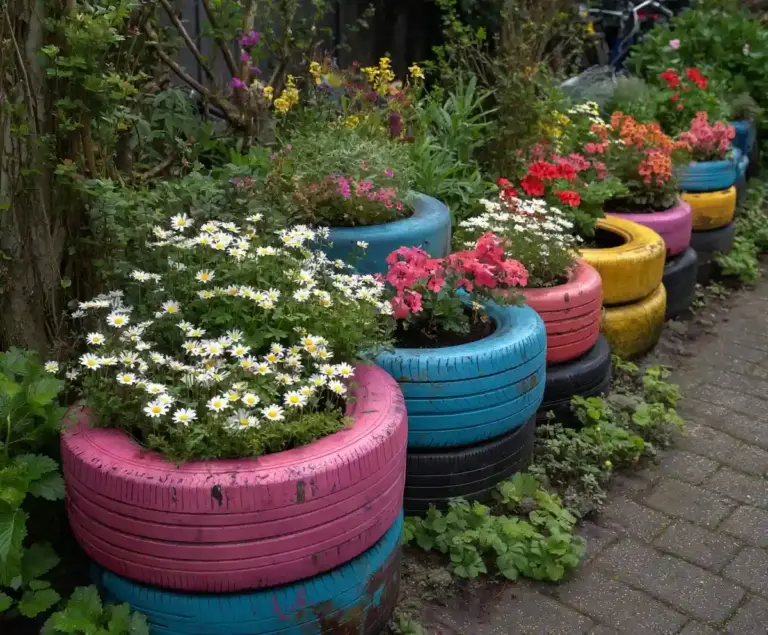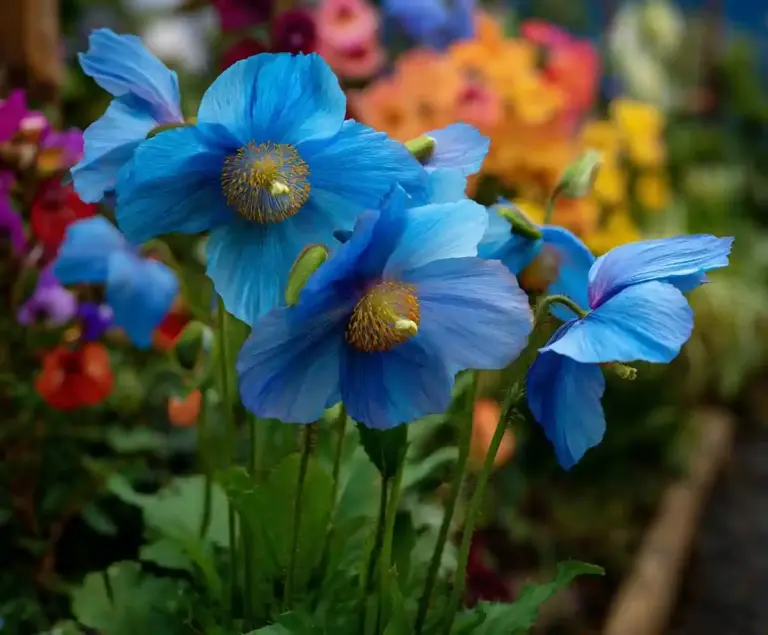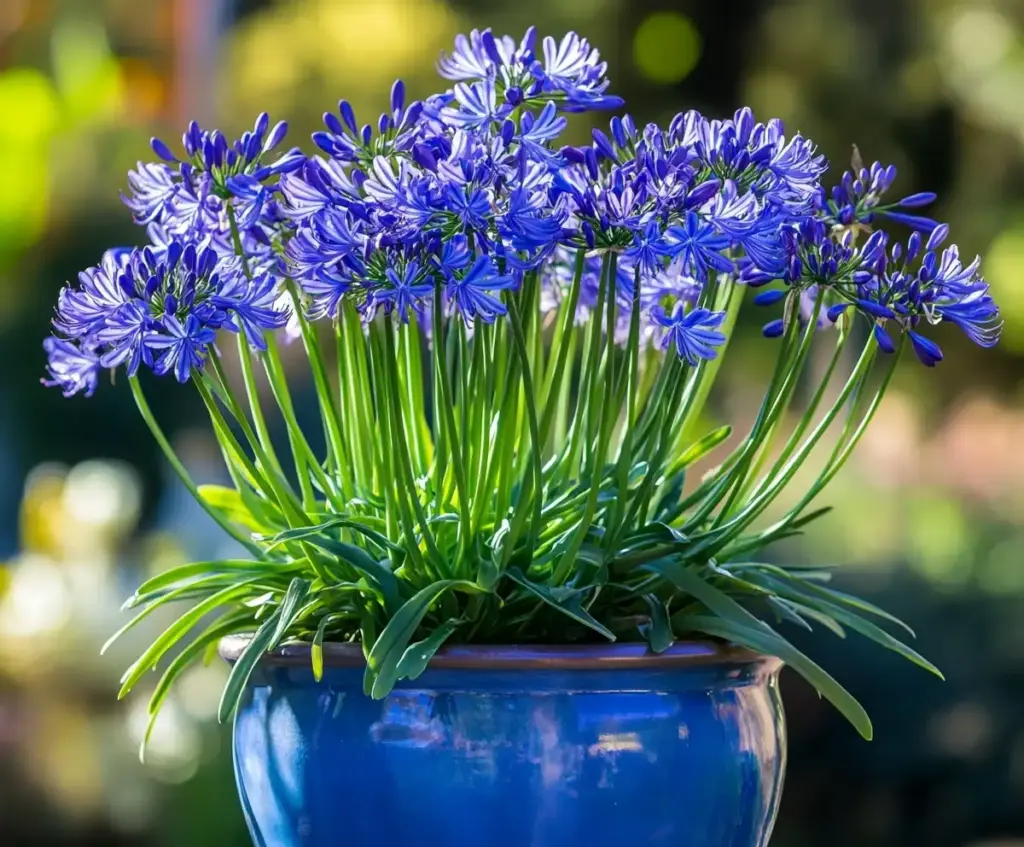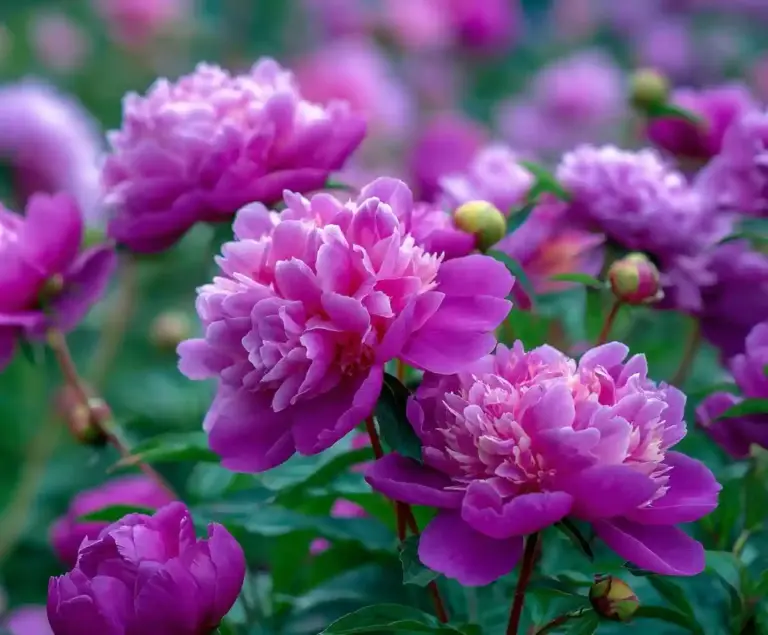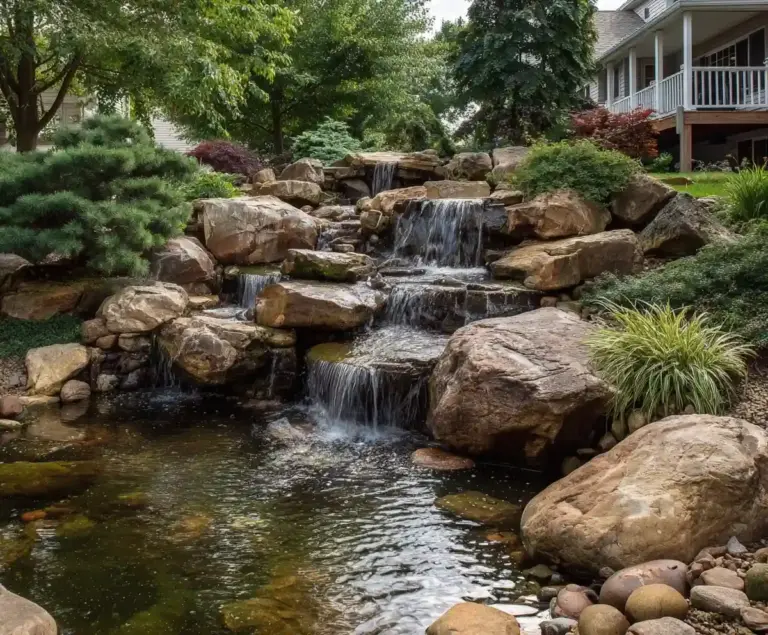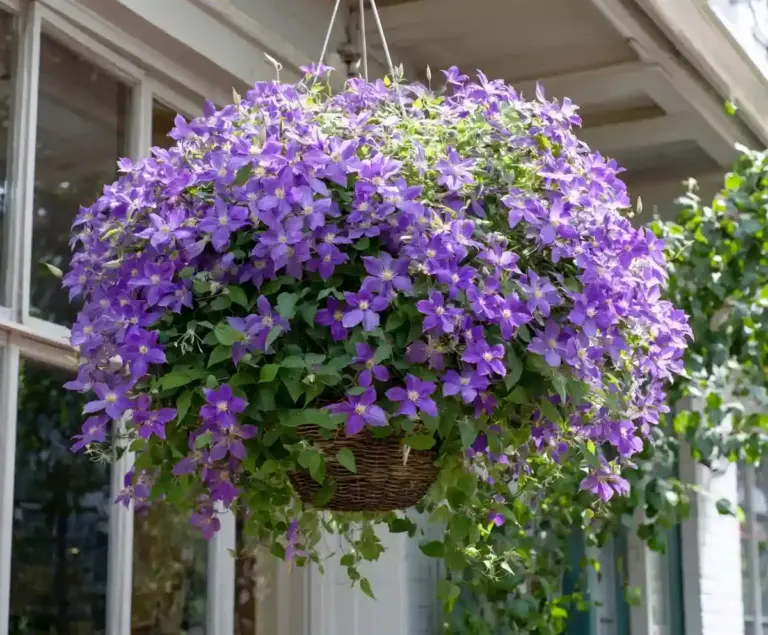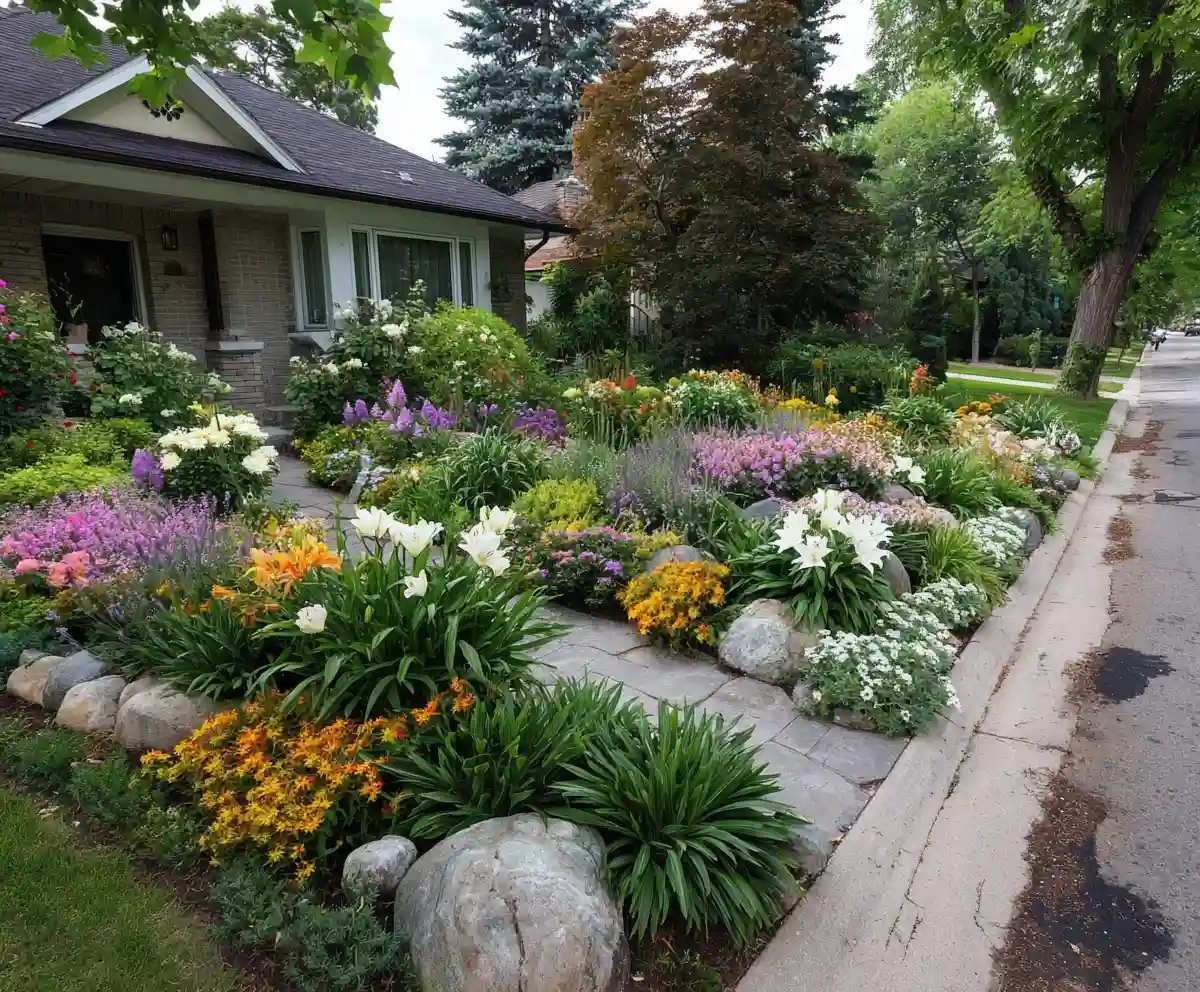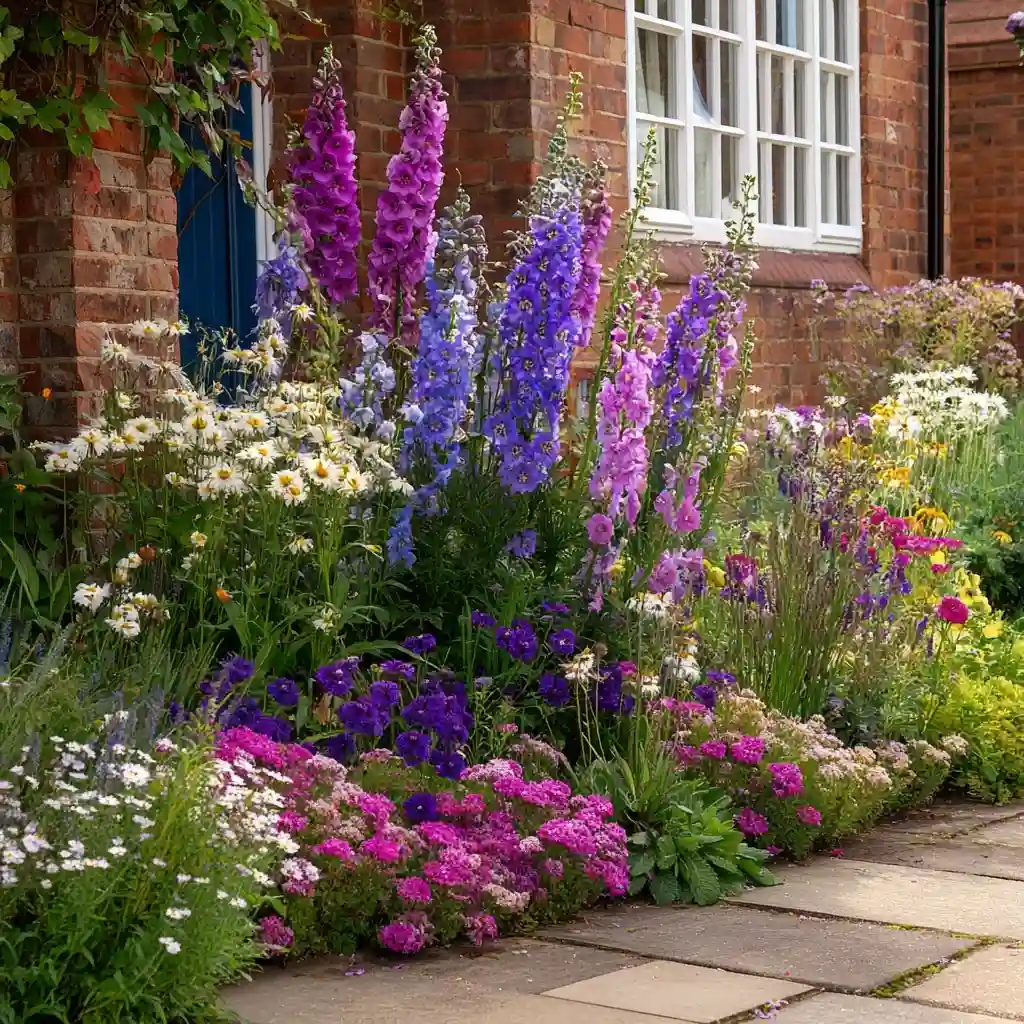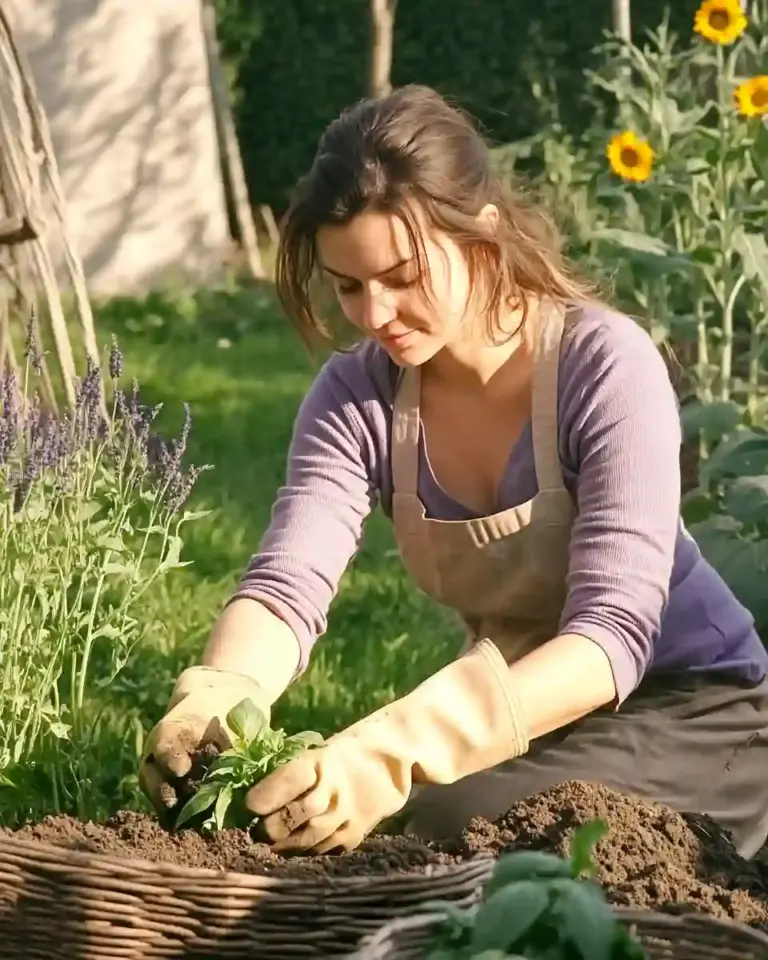Flower bed ideas can completely transform the look and feel of your home’s front yard. More than just adding color, they define your home’s personality and set the tone before guests ever knock on the door. Whether you prefer the tidy charm of symmetrical layouts or the free-spirited appeal of wildflower meadows, the right flower bed can elevate your home’s curb appeal and make daily life feel a little more vibrant.
Choosing the perfect design starts with understanding your climate, the amount of sunlight your yard receives, and your personal style. From low-maintenance rock gardens to edible landscapes, we’ve gathered a range of flower bed ideas that combine beauty with functionality—so you can grow a front yard that truly reflects you.
Table of Contents
1. Perennial Border Flower Bed
When it comes to timeless flower bed ideas, a perennial border is a favorite among gardeners for good reason. This classic style layers plants in a way that brings continuous color and texture throughout the seasons—without the need to replant every year.
To create this look, start with a backdrop of taller perennials like delphiniums, hollyhocks, or foxgloves. Then, work forward with mid-height flowers such as echinacea and black-eyed Susans, finishing with low-growing options like dianthus or creeping phlox near the front edge. This tiered layout naturally draws attention toward your entrance and adds depth to your yard.
Design Tips:
- Choose bold, coordinating colors such as purples, oranges, and deep pinks for visual impact.
- Select long-blooming perennials like coreopsis, salvia, and catmint to keep the display lively from spring through fall.
- Match floral tones to your home’s exterior for a cohesive look—especially effective against brick or neutral siding.
Because perennials come back each year with minimal effort, this style is ideal for homeowners who want a lush, layered garden without constant replanting.
2. Cottage Garden Style Flower Bed
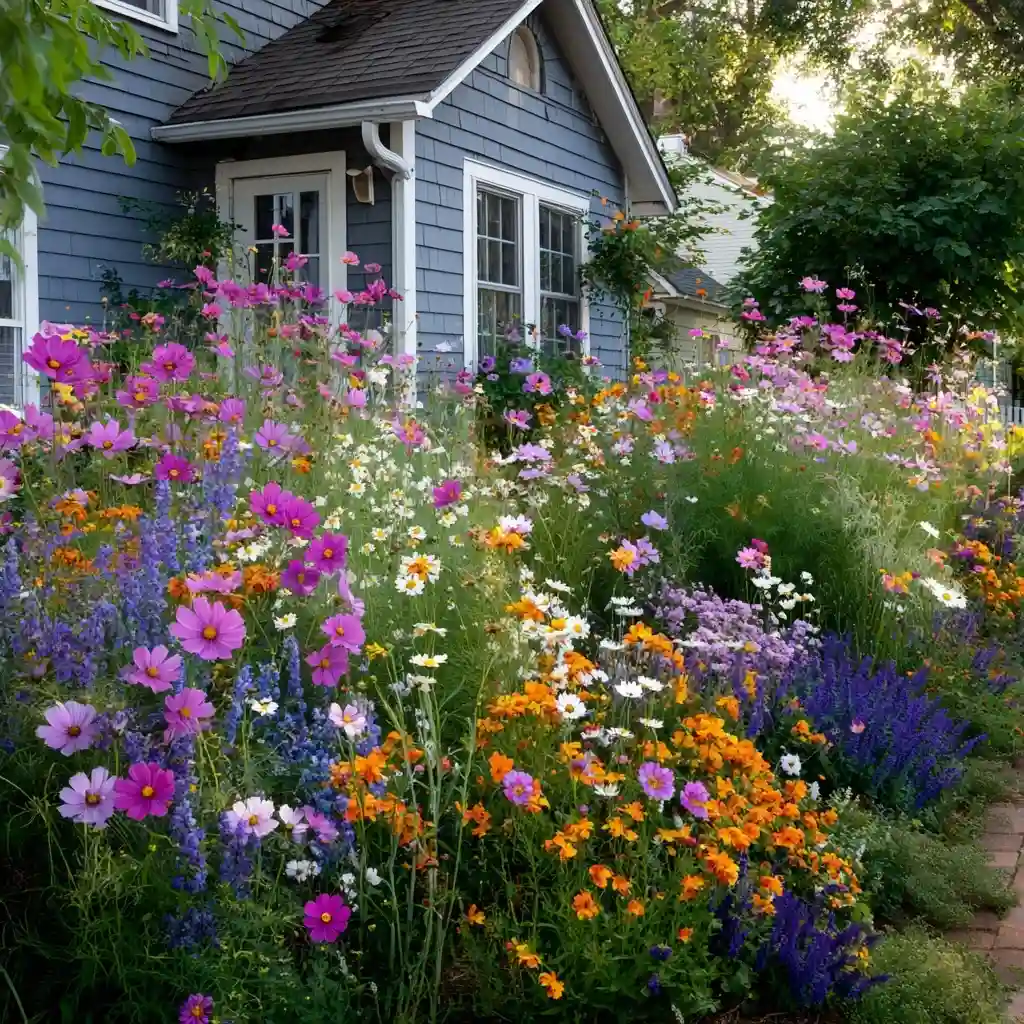
If you’re looking for flower bed ideas with a romantic, storybook charm, the cottage garden style offers a joyful mix of color, texture, and natural whimsy. This informal design favors abundance over order, creating a lush, overflowing look that feels both inviting and full of personality.
A typical cottage-style bed is packed with classic blooms like daisies, zinnias, cosmos, phlox, and lavender. The key is variety—mix colors, heights, and textures to create a garden that looks spontaneous but still thoughtfully planted.
Design Tips:
- Use flowering herbs like thyme, chamomile, or lavender for added scent and function.
- Let plants fill in gaps organically; cottage gardens don’t need straight lines or perfect spacing.
- Choose pollinator-friendly flowers like bee balm, snapdragons, and coneflowers to attract butterflies and bees.
This style works especially well in front of cottages or homes with blue, gray, or white exteriors. It’s a low-stress layout that rewards creativity and supports biodiversity—all while looking like it came straight out of an English countryside.
3. Succulent Garden Flower Bed
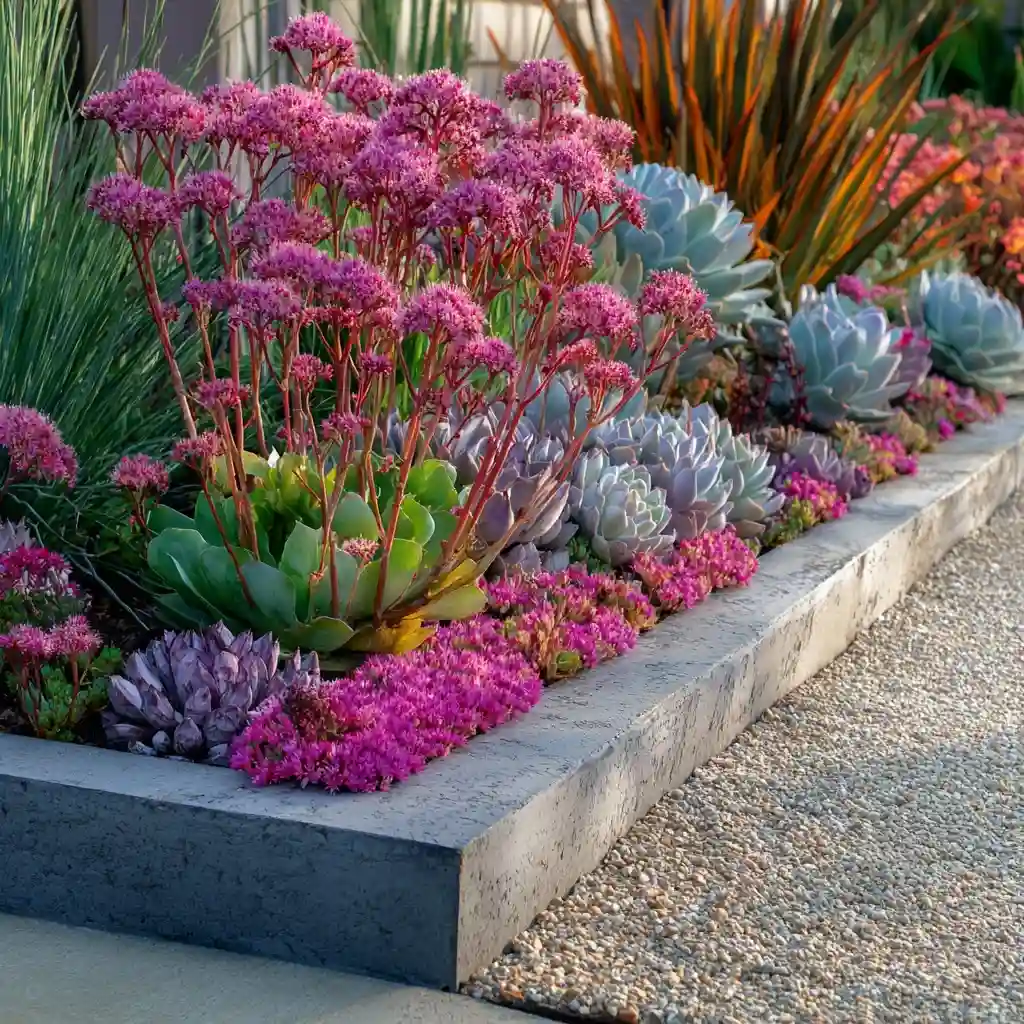
Among modern flower bed ideas, the succulent garden stands out for its clean look, sculptural plants, and incredible drought resistance. Perfect for dry climates or homeowners looking for a low-maintenance option, this style delivers beauty with minimal upkeep.
Succulents like echeveria, sedum, and hens-and-chicks bring unique shapes and soothing tones of blue, green, and silver. Add splashes of color with flowering varieties like ice plant or purslane. Gravel or stone mulch enhances the aesthetic while improving drainage and keeping weeds at bay.
Design Tips:
- Use a mix of rosette and trailing succulents for layered visual interest.
- Pair succulents with stone borders or concrete planters for a contemporary touch.
- Introduce texture with ornamental grasses or small cacti to break up the symmetry.
Succulent beds thrive in full sun and need little water once established. They’re a smart fit for stucco or modern-style homes, especially where water conservation is a priority. This design proves that flower bed ideas can be stylish, sustainable, and surprisingly easy to maintain.
4. Wildflower Meadow Flower Bed
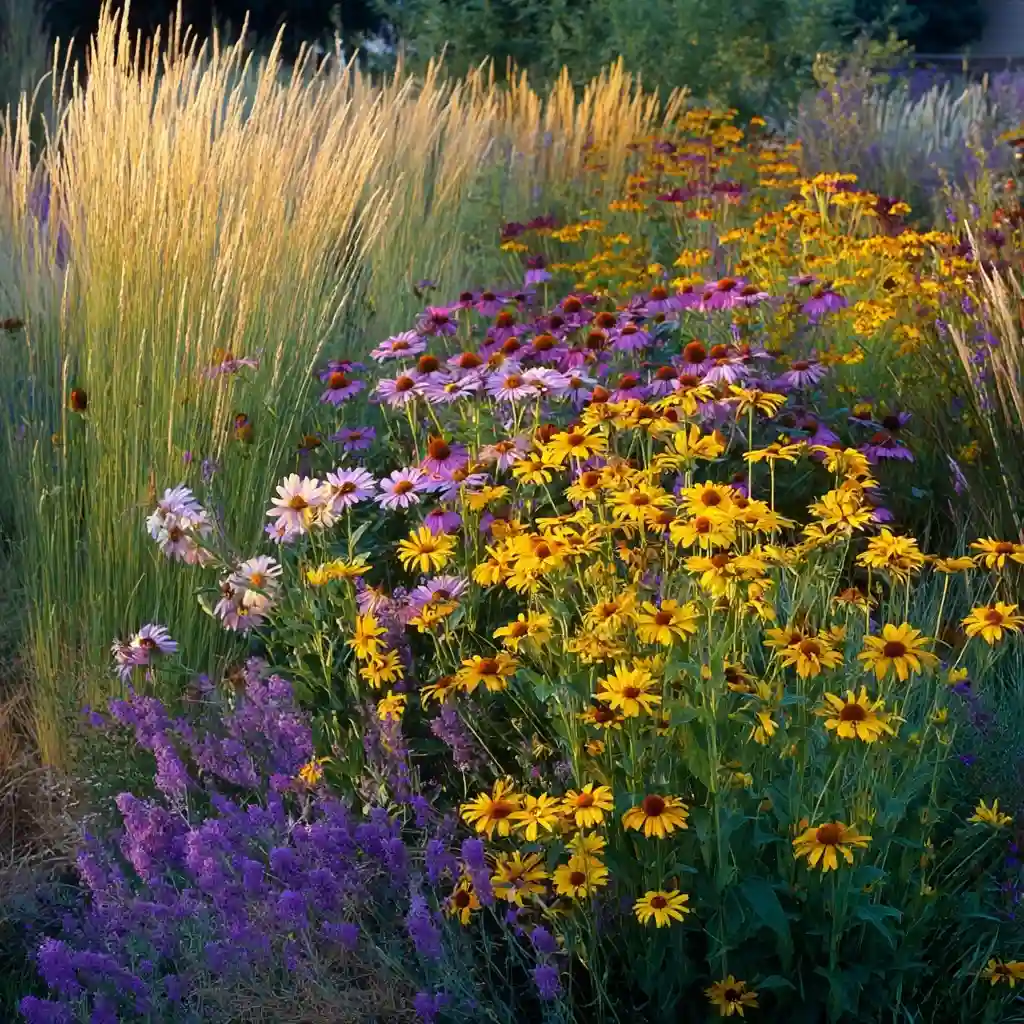
For those drawn to natural beauty and carefree color, wildflower meadows are one of the most enchanting flower bed ideas you can try. These gardens mimic nature’s spontaneity, using native wildflowers and grasses to create a constantly evolving display of seasonal blooms.
This style works best when you let go of symmetry and structure. Blend flowers like coneflowers, daisies, black-eyed Susans, and lavender in loose, flowing arrangements. Because wildflowers bloom at different times, your bed will offer continuous interest from spring through fall.
Design Tips:
- Choose native wildflower seeds to support local pollinators and ensure hardiness.
- Add ornamental grasses like little bluestem or blue fescue for movement and contrast.
- Avoid overcrowding early on—wildflowers will naturally spread and fill in over time.
Wildflower beds pair beautifully with rustic or farmhouse-style homes and are ideal for gardeners who love low-maintenance landscapes with high visual and ecological impact. Plus, they’re magnets for bees, butterflies, and beneficial insects—making your yard both stunning and sustainable.
5. Formal Symmetry Flower Bed
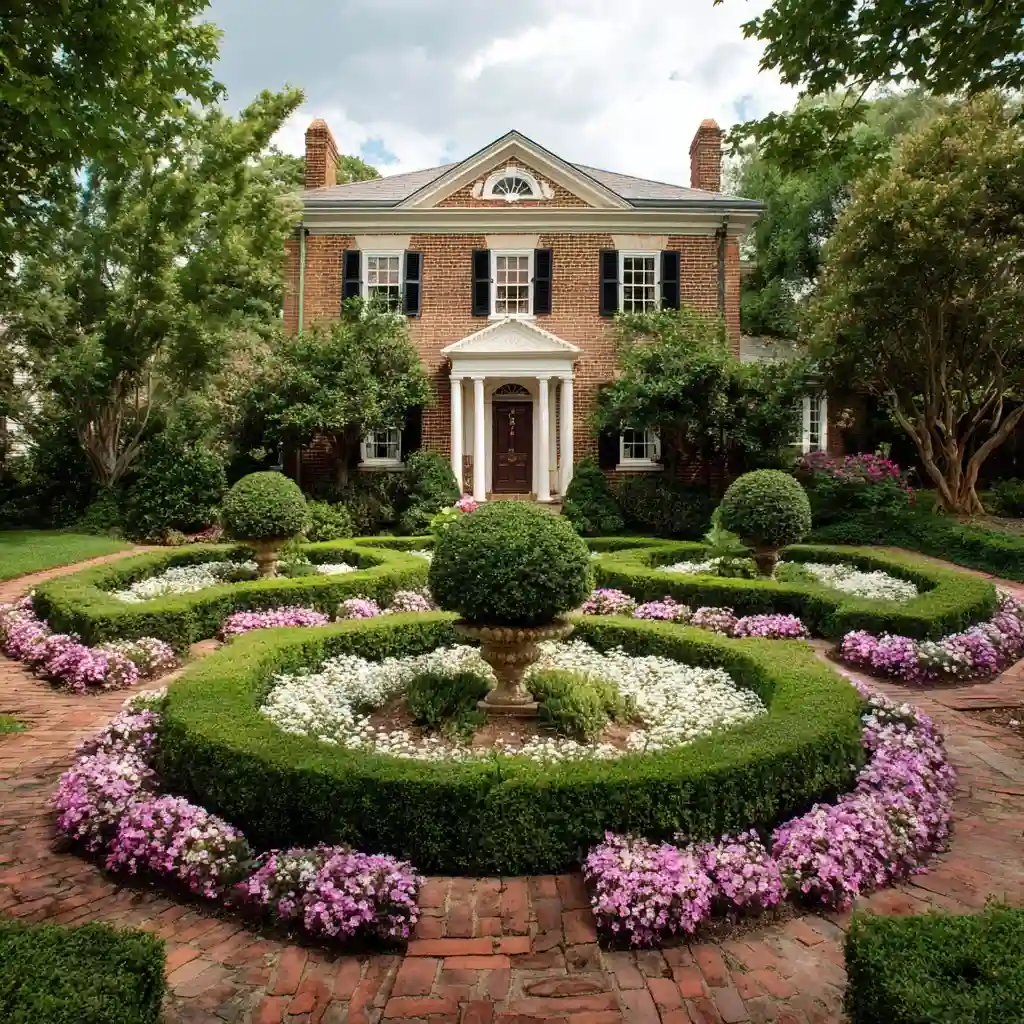
If you prefer crisp lines and a polished look, formal symmetry is one of the most classic and refined flower bed ideas to consider. This design emphasizes balance, order, and geometric shapes—perfect for colonial, traditional, or brick-front homes.
Create structure by mirroring your flower beds on either side of your entryway or walkway. Use repeating color patterns and layered planting to enhance the sense of symmetry. For example, plant a border of marigolds or begonias, followed by mid-height flowers like salvia or geraniums, and anchor the center with a topiary or boxwood shrub.
Design Tips:
- Stick to a limited color palette—think whites, pinks, and purples—for cohesion.
- Use stone, brick, or metal edging to define clean boundaries.
- Add a focal point like a decorative urn or small tree in the center for visual impact.
This style doesn’t just enhance curb appeal—it creates a sense of timeless elegance that instantly elevates your front yard. Among structured flower bed ideas, formal symmetry offers both order and charm in perfect proportion.
6. Tropical Paradise Flower Bed
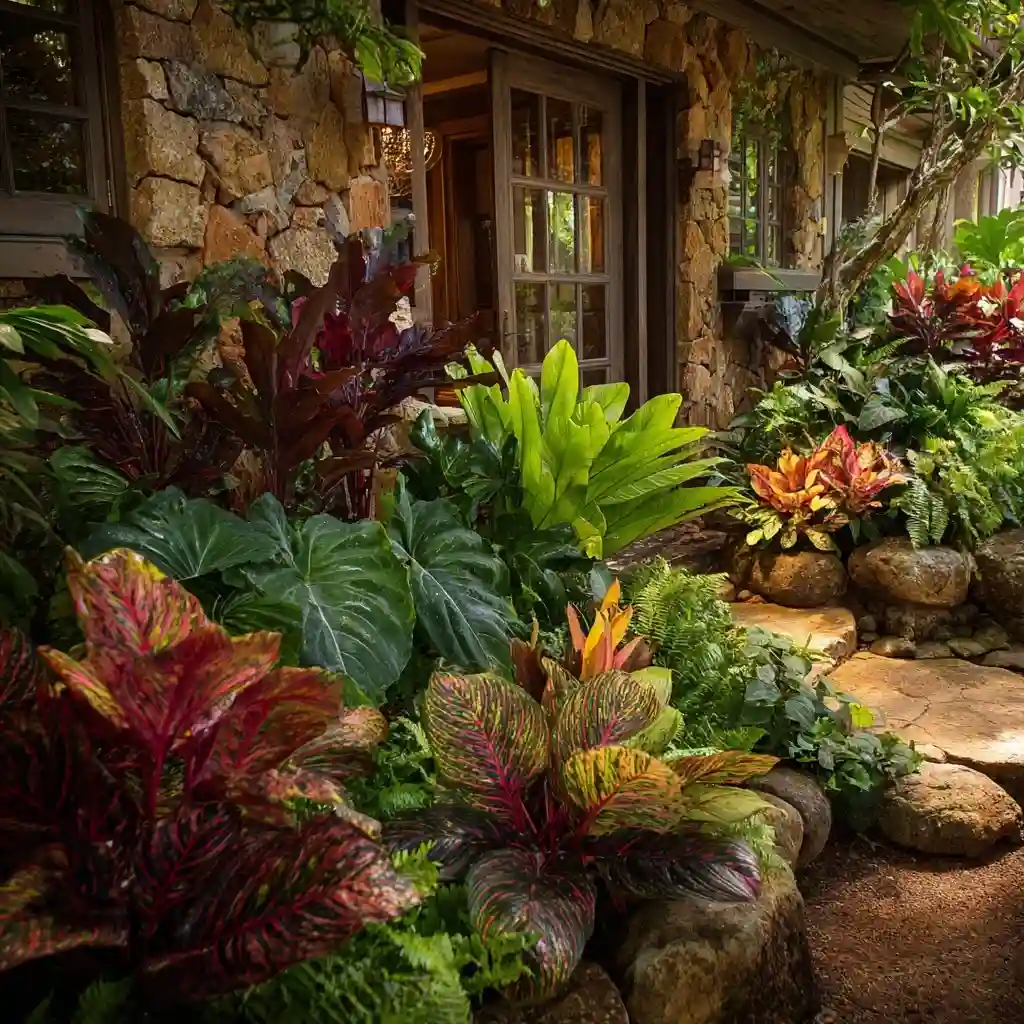
Bring vacation vibes right to your doorstep with one of the boldest flower bed ideas—the tropical paradise style. Lush, vibrant, and full of texture, this layout turns your front yard into a warm, exotic retreat no matter where you live.
Tropical flower beds are anchored by large-leaved plants like elephant ears, caladiums, and cannas. To add color and layers, mix in bromeliads, hibiscus, or colorful coleus. The goal is density and drama—plants should overlap, climb, and cascade to mimic a jungle-like setting.
Design Tips:
- Use a tiered approach: tall plants in back, medium foliage in the middle, and groundcovers or colorful accents in front.
- Choose high-contrast foliage—lime greens, deep reds, and variegated patterns—to create visual energy.
- Include natural materials like bamboo edging or lava rocks for added tropical flair.
This bed style works beautifully with wood or stone exteriors and shaded porches. While true tropical plants prefer warm, humid climates, cooler regions can mimic the effect using hardy substitutes or annuals planted in summer. If you want flower bed ideas that feel like a getaway, this lush, vibrant look is your best bet.
7. Modern Minimalist Flower Bed
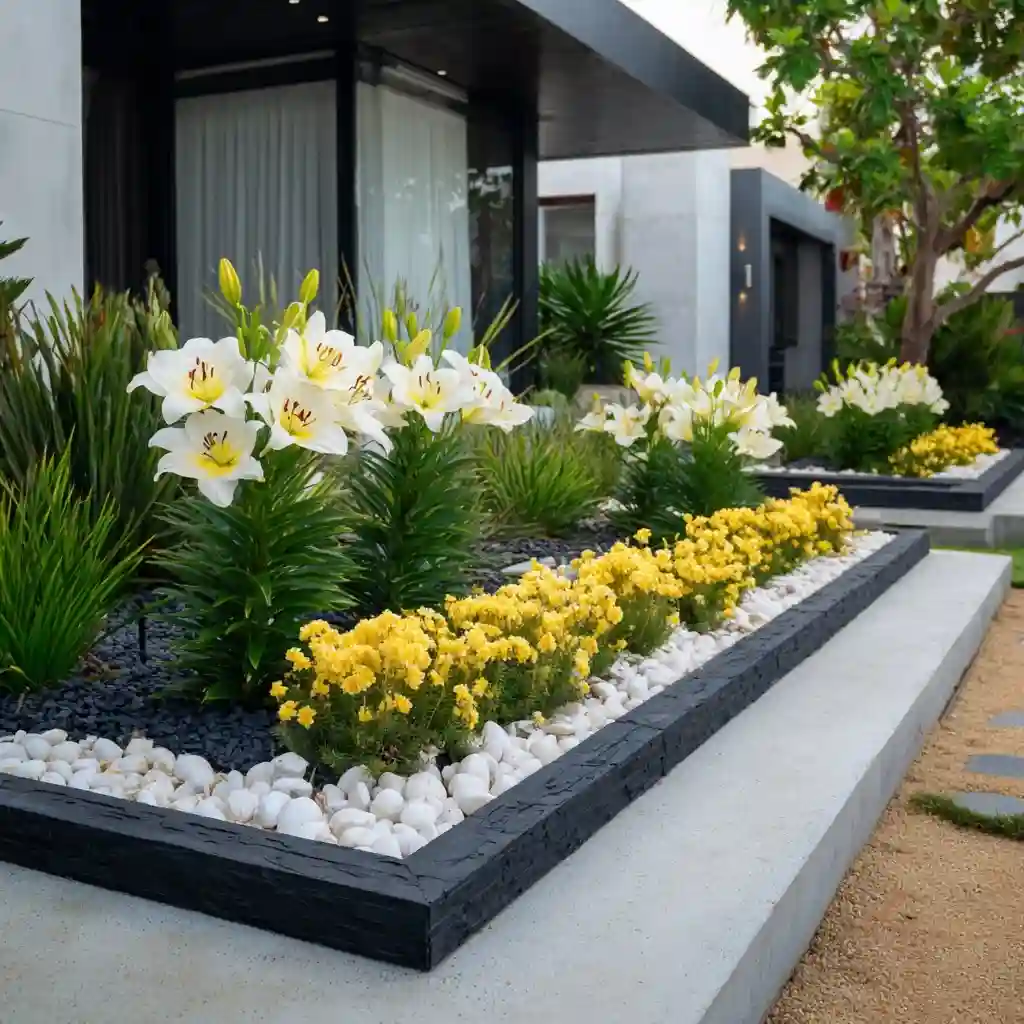
For homeowners drawn to sleek, understated landscapes, modern minimalist beds are among the most elegant flower bed ideas available. This style is all about clean lines, simple plant choices, and a restrained color palette that complements contemporary architecture.
Rather than filling your bed with a wide variety of plants, focus on a few bold selections placed with intention. Tall, architectural flowers like alliums or agapanthus can provide vertical interest, while groundcovers such as creeping Jenny or mondo grass add texture at the base. Keep shapes geometric—rectangular or linear beds work best.
Design Tips:
- Stick to two or three plant types for uniformity and ease of maintenance.
- Use monochromatic or contrasting color schemes—white flowers against black mulch, or soft greens beside white stones.
- Choose decorative elements like smooth river rocks, steel edging, or poured concrete borders to emphasize structure.
Modern minimalist beds are particularly effective in small front yards, where every detail matters. With fewer plants and simple materials, this approach not only looks refined but also saves time and water. If you’re seeking flower bed ideas that echo a clean, curated lifestyle, minimalism may be your perfect match.
8. Rock Garden Flower Bed
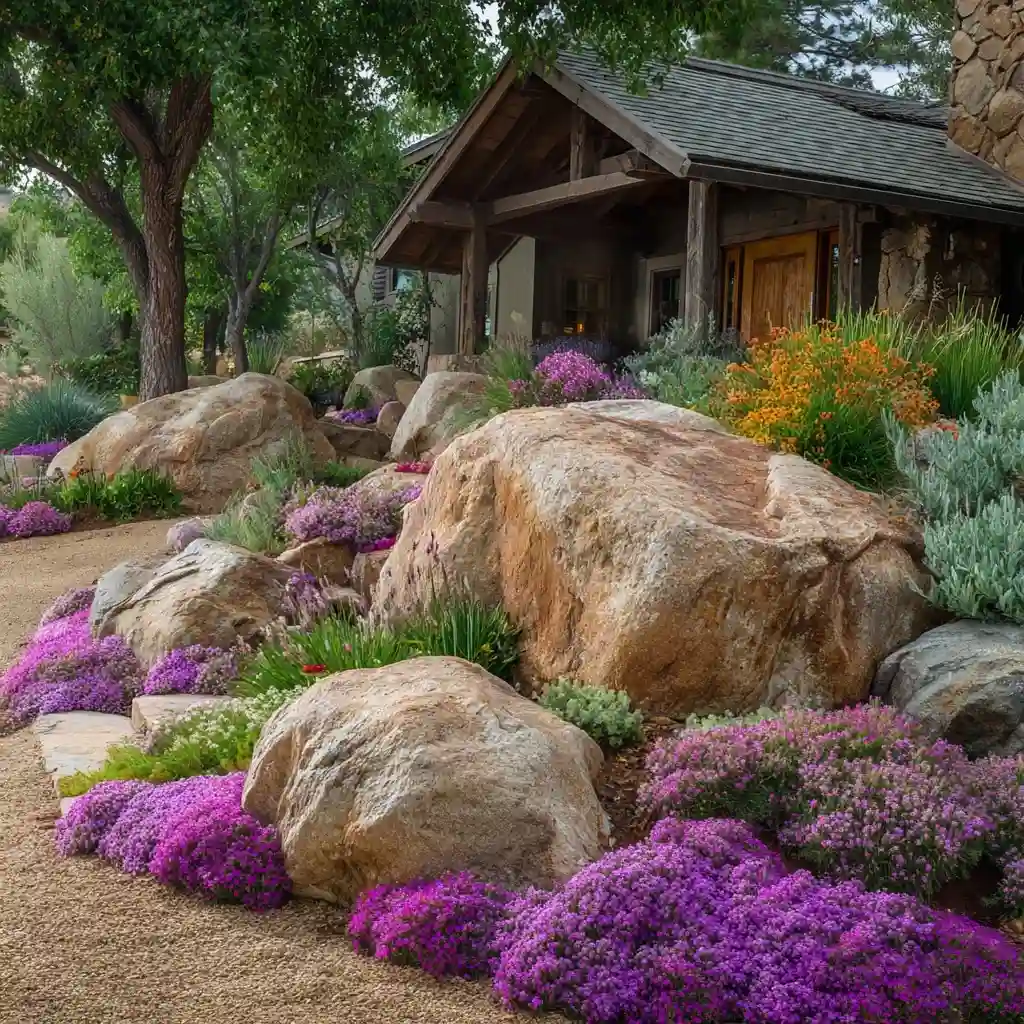
When durability and texture are top priorities, rock gardens offer one of the most striking and practical flower bed ideas you can implement. This style combines hardy plants with stone elements to create a natural, low-maintenance front yard design that thrives in a variety of climates.
Use stones to create structure—whether as borders, raised mounds, or focal points—and fill the spaces with resilient plants like sedum, yarrow, creeping phlox, and dianthus. These plants not only thrive in rocky, well-drained soil but also offer vivid pops of color throughout the growing season.
Design Tips:
- Layer different sizes and shades of rock for added visual interest and contrast.
- Use gravel or crushed stone mulch to control weeds and improve drainage.
- Integrate height with small boulders or mounded plantings for dimension.
Rock gardens work especially well in sloped front yards or arid regions where traditional lawns struggle. They complement rustic, wood-accented homes and modern designs alike. If you’re looking for flower bed ideas that combine beauty with low effort, this style checks all the right boxes—and holds up beautifully through the seasons.
9. Shade Garden Flower Bed
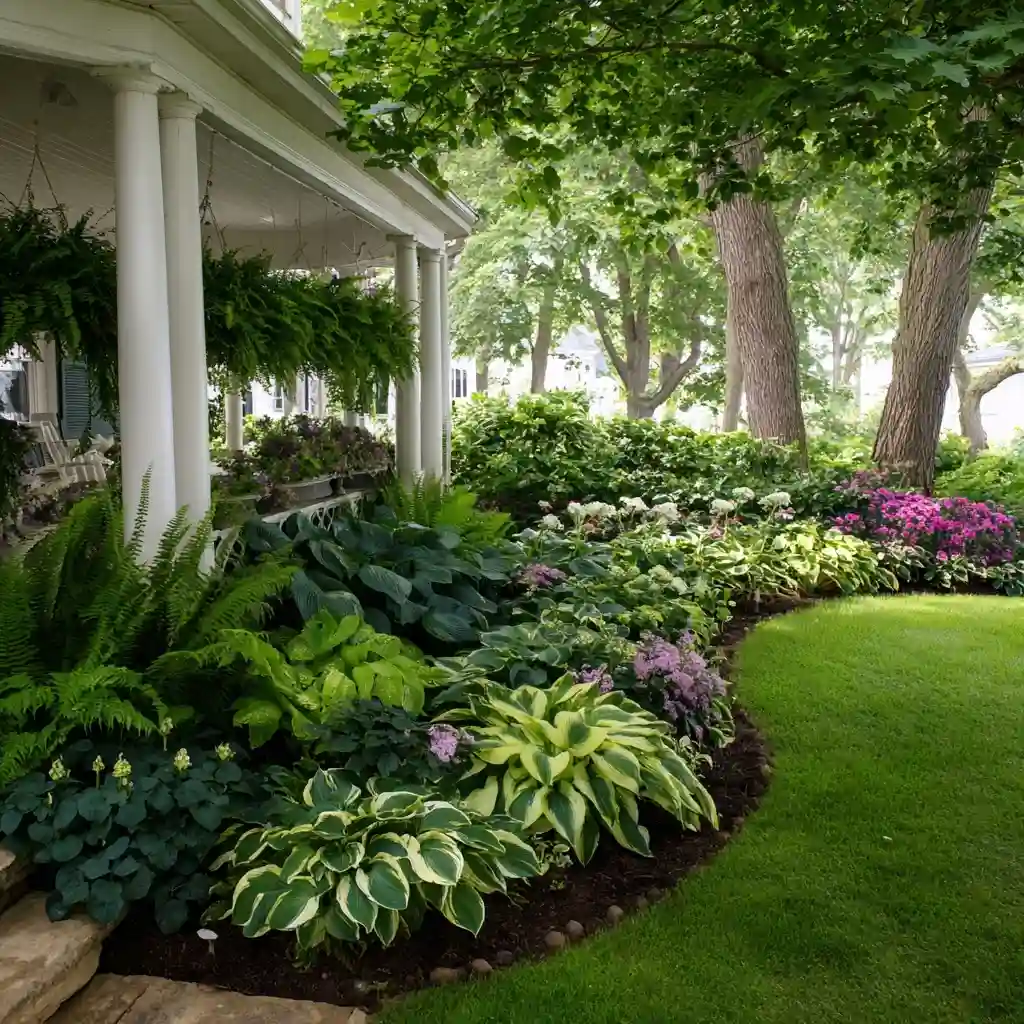
Shaded areas don’t have to be dull—some of the most peaceful and elegant flower bed ideas are designed for low-light conditions. A shade garden flower bed makes use of soft textures, layered foliage, and subtle color to bring life to the cooler corners of your yard.
Start with foundation plants like hostas, ferns, and heuchera, which offer a wide range of leaf shapes and colors. Then, introduce blooms such as impatiens, astilbe, or begonias to add gentle color without the need for direct sunlight.
Design Tips:
- Choose plants with variegated or light-colored foliage—white, lime, or chartreuse—to brighten darker spots.
- Use curved bed lines or meandering pathways to reflect the organic feel of shaded spaces.
- Mix textures: large, glossy leaves next to fine, lacy fronds create natural depth.
This type of flower bed is perfect for areas under large trees, beside porches, or along north-facing walls. With the right plant choices, even the dimmest part of your yard can become a cool, inviting retreat. Shade beds prove that flower bed ideas can be both calming and full of character—even without full sun.
10. Edible Landscape Flower Bed
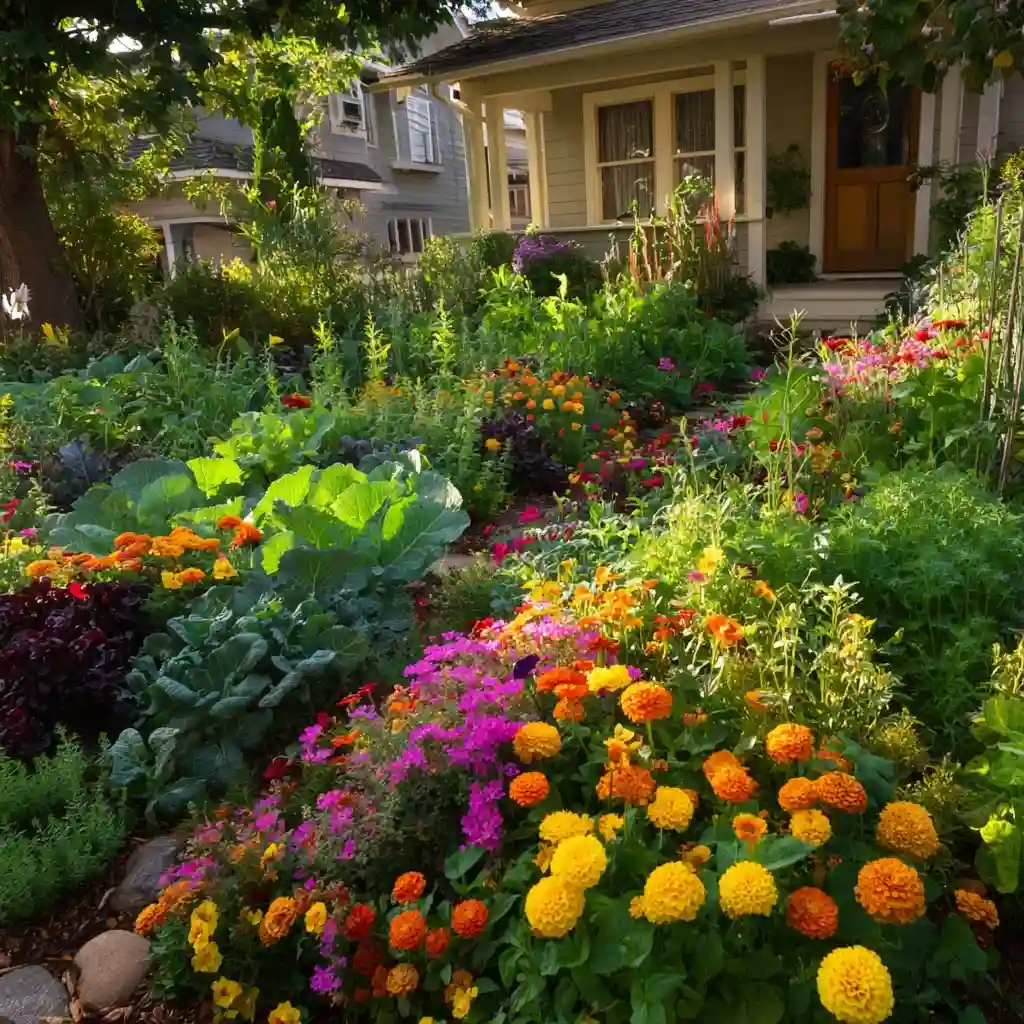
Combining beauty and practicality, edible landscaping is one of the most rewarding flower bed ideas for front yards. This approach blends ornamental flowers with herbs, leafy greens, and colorful vegetables—creating a garden that’s as delicious as it is decorative.
Start by intermixing flowering herbs like chives, lavender, and basil with vegetables that boast visual appeal—such as rainbow chard, purple kale, or bright orange nasturtiums. Not only do these plants add texture and color, but many also attract pollinators and deter pests.
Design Tips:
- Group plants by color or leaf shape for a cohesive and intentional layout.
- Use marigolds and calendula to border beds—they repel insects while adding brilliant color.
- Add height with upright edibles like rosemary, lemongrass, or even cherry tomatoes on trellises.
An edible flower bed fits well in small yards or as a focal point near entryways, turning your front garden into a mini farmers market. These flower bed ideas are especially appealing to gardeners who love both aesthetics and functionality. Plus, harvesting from your own front yard adds an extra layer of satisfaction every season.
author:Conclusion
Creating a front yard that feels both welcoming and reflective of your style starts with choosing the right flower bed ideas. Whether you lean toward the tidy beauty of a formal layout, the wild charm of a meadow, or the practicality of edible landscaping, there’s a design that suits your space, climate, and lifestyle.
Before planting, consider key factors like sunlight, soil condition, and how much time you want to spend on maintenance. From low-water succulent beds to lush perennial borders, these ten flower bed ideas are adaptable, inspiring, and designed to make your home stand out in the best possible way.
Start small, stay consistent, and let your garden grow with you. Every flower bed you plant adds more color, character, and joy to your home’s first impression.
FAQ – Flower Bed Ideas
What are the best low-maintenance flower bed ideas?
Low-maintenance flower bed ideas include succulent gardens, rock gardens, and perennial borders. These styles use hardy plants that require minimal watering, pruning, or replanting—perfect for busy homeowners or those new to gardening.
How do I choose a flower bed style that matches my home?
Match your flower bed to your home’s architecture:
Modern or contemporary homes – Try minimalist beds with clean lines and limited plant varieties.
Colonial or formal homes – Go with symmetrical layouts and structured designs.
Cottage or farmhouse styles – Embrace the informal charm of wildflower or cottage-style beds.
Can I plant a flower bed in full sun?
Yes! Many flower bed ideas thrive in full sun. Perennial borders, edible landscapes, tropical beds, and succulent gardens all do well with six or more hours of sunlight per day—just be sure to choose sun-loving plants.
What flower bed designs work best in shady areas?
Shade garden flower beds are ideal. Use plants like hostas, astilbe, impatiens, and ferns to bring life to low-light spaces. Bright or variegated foliage helps reflect light and keep shaded beds visually interesting.
How do I keep my flower bed looking good year-round?
Spring – Add compost and plant spring-blooming flowers.
Summer – Mulch to retain moisture, deadhead spent blooms.
Fall – Trim back perennials and plant fall color.
Winter – Protect beds with mulch or covers; add evergreen elements for visual interest.
🌿 Love gardening inspiration? Follow me on Pinterest for bold plant ideas, tips, and seasonal color!
More Posts
